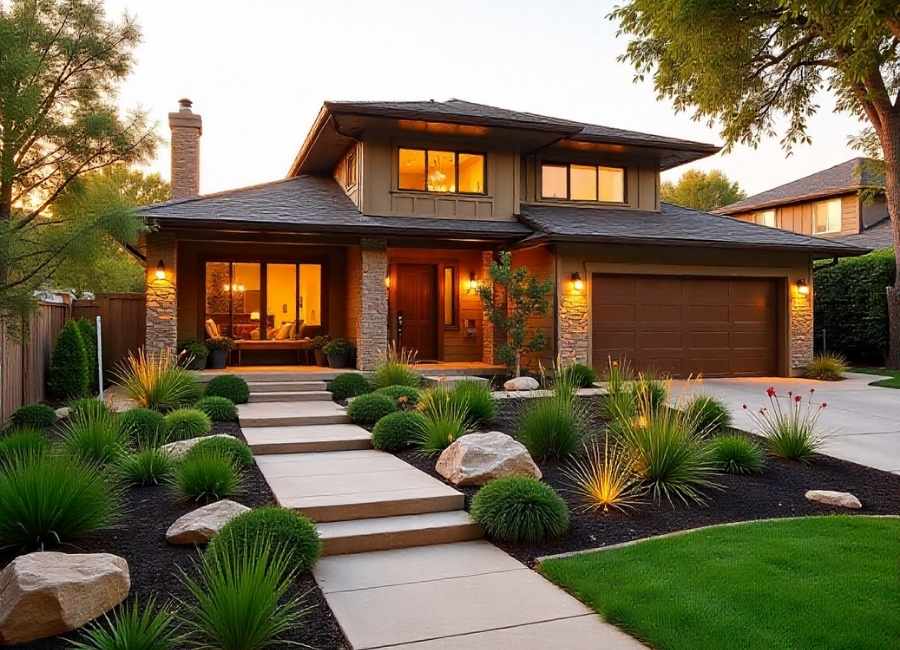When it comes to landscaping a corner house on a side hill, the challenge lies in creating a design that is both visually stunning and practical. Add the need for drought tolerance to the mix, and you have a unique puzzle to solve! Whether you’re a homeowner, professional landscaper, or gardening enthusiast, this guide will equip you with everything you need to design a drought-tolerant masterpiece that conserves water, requires minimal maintenance, and enhances the aesthetic appeal of your corner-side property.
Why Go for Drought-Tolerant Landscaping?
Save Water, Save Money
Water is a precious resource, and with increasing drought conditions in many areas, conserving it through landscaping is both responsible and cost-efficient. A well-designed, drought-tolerant yard can reduce water consumption by up to 60%, significantly cutting your water bills.
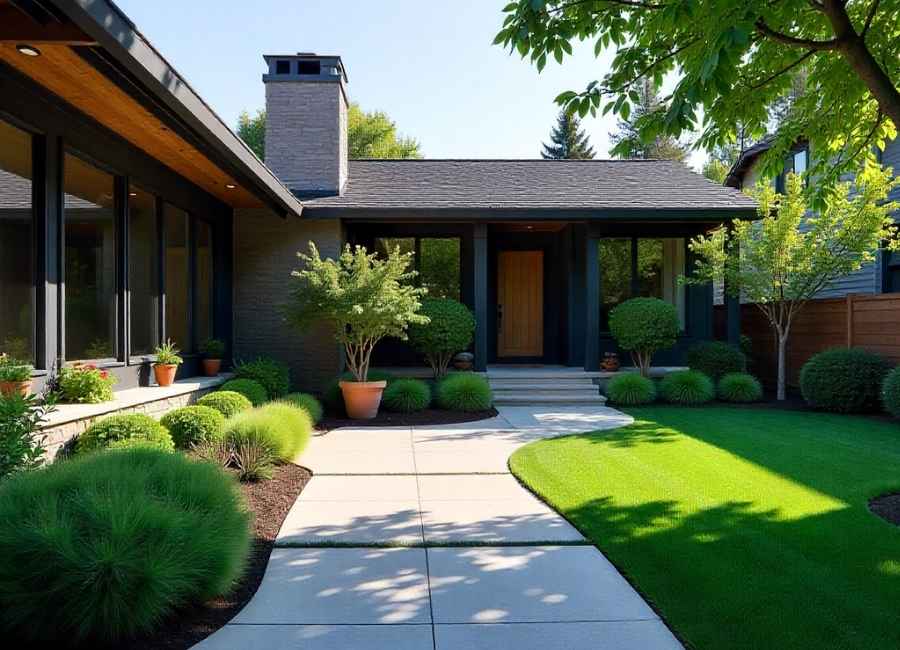
Low Maintenance
Nobody wants to spend every weekend mowing lawns and trimming hedges. Most drought-tolerant plants are hardy and require minimal upkeep, meaning you can enjoy your stunning outdoor space without the constant upkeep.
Boost Curb Appeal
A side-hill corner property often becomes a focal point in the neighborhood. Strategic landscaping can turn it into a showstopper, increasing your home’s curb appeal and property value.
Understanding the Basics of Landscaping a Side Hill
The Challenges of a Side Hill
Landscaping on a sloped terrain comes with its own set of issues:
- Erosion: Water runoff can wash away soil and damage plants.
- Drainage: Poor drainage might create uneven water distribution.
- Access Difficulty: Mowing or maintaining heavily sloped areas can be challenging.
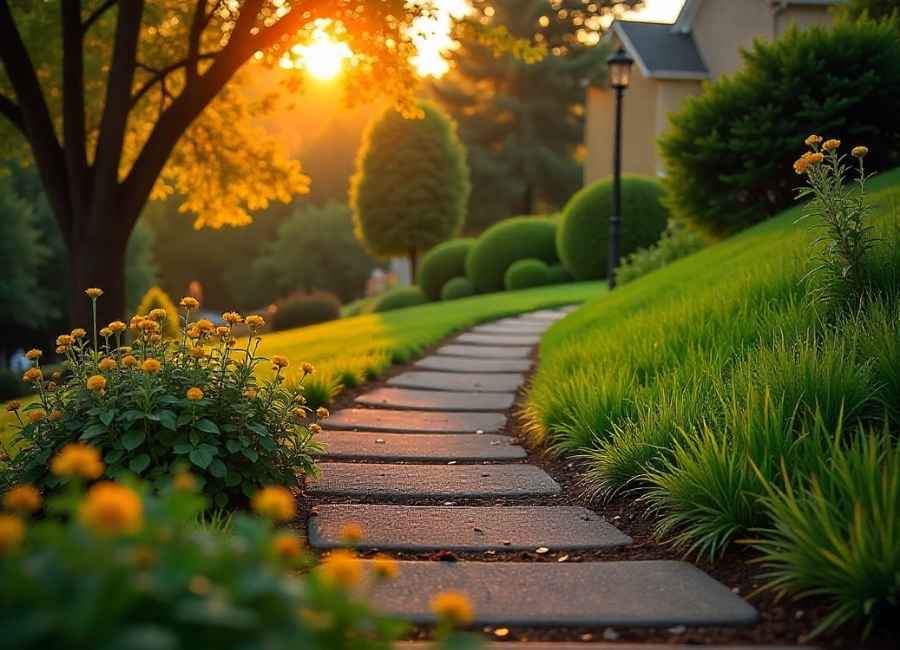
Designing with these concerns in mind is crucial for creating a functional and sustainable landscape.
Solutions for Side Hill Landscaping
- Terracing: Adding terraces reduces erosion and creates flat planting areas for easier access.
- Retention Walls: These walls stabilize the slope and can double as decorative features.
- Drip Irrigation: This method delivers water directly to a plant’s root zone, minimizing water waste.
Once these essentials are in place, you’re ready to choose the plants.
Selecting Drought-Tolerant Plants for Your Side Hill Landscape
The secret to a successful drought-tolerant landscape is picking the right plants for your specific conditions. Here are some top categories to consider.
1. Groundcovers
Groundcovers not only add softness and color but also help with erosion control. Perfect for blanketing a side hill, they require minimal watering and effort.
- Sedum (Stonecrop): A low-growing plant with fleshy leaves and tiny flowers. Thrives in full sun and poor soil.
- Ice Plant (Delosperma): Features striking, vibrant flowers and spreads quickly to cover ground.
- Creeping Thyme (Thymus serpyllum): This hardy herb forms dense mats, releasing a pleasant scent when walked on.
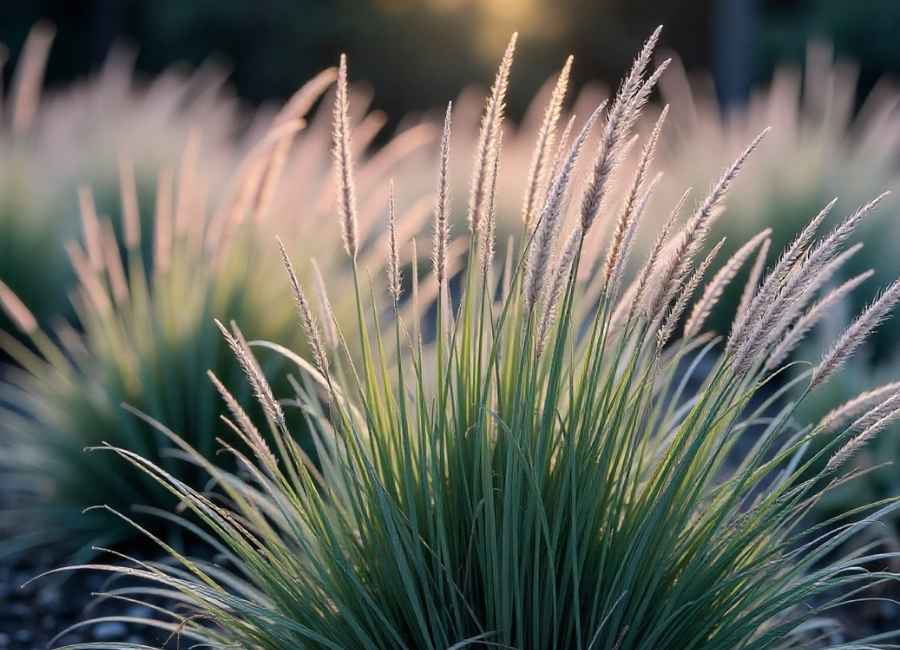
2. Native Grasses
Grasses bring a natural, meadow-like feel to any slope. Many native grasses are drought-tolerant and require little maintenance.
- Blue Fescue (Festuca glauca): A compact grass with blue-gray foliage, perfect for adding texture.
- Muhlenbergia capillaris (Pink Muhly Grass): A dramatic grass with airy pink plumes in the fall.
- Feather Reed Grass (Calamagrostis x acutiflora): A tall, upright grass that sways beautifully in the wind.
3. Succulents
Succulents are loved for their ability to store water and thrive in arid conditions. They’re also visually stunning and sculptural.
- Aeonium (Tree Houseleek): Offers rosette-shaped leaves in various colors and heights.
- Agave (Century Plant): Produces bold, architectural shapes and requires virtually no maintenance.
- Echeveria: Compact rosettes in a range of colors create beautiful focal points.
4. Shrubs and Perennials
Add structure and year-round interest with shrubs and perennials that can adapt to dry conditions.
- Lavender (Lavandula): Fragrant, hardy, and perfect for slopes with good drainage.
- Russian Sage (Perovskia atriplicifolia): A drought-tolerant perennial known for its silvery foliage and long-lasting purple flowers.
- Manzanita (Arctostaphylos): A low-water shrub with striking red bark and evergreen foliage.
5. Trees for Structure
Anchor your landscape with drought-tolerant trees that can thrive on a hill.
- Olive Tree (Olea europaea): Classic and elegant, these trees add Mediterranean charm.
- Palo Verde (Parkinsonia): Ideal for arid climates, with vibrant green bark and yellow blossoms.
- Crepe Myrtle (Lagerstroemia): A small tree with stunning blooms and smooth, peeling bark.
Designing Your Corner House Landscape
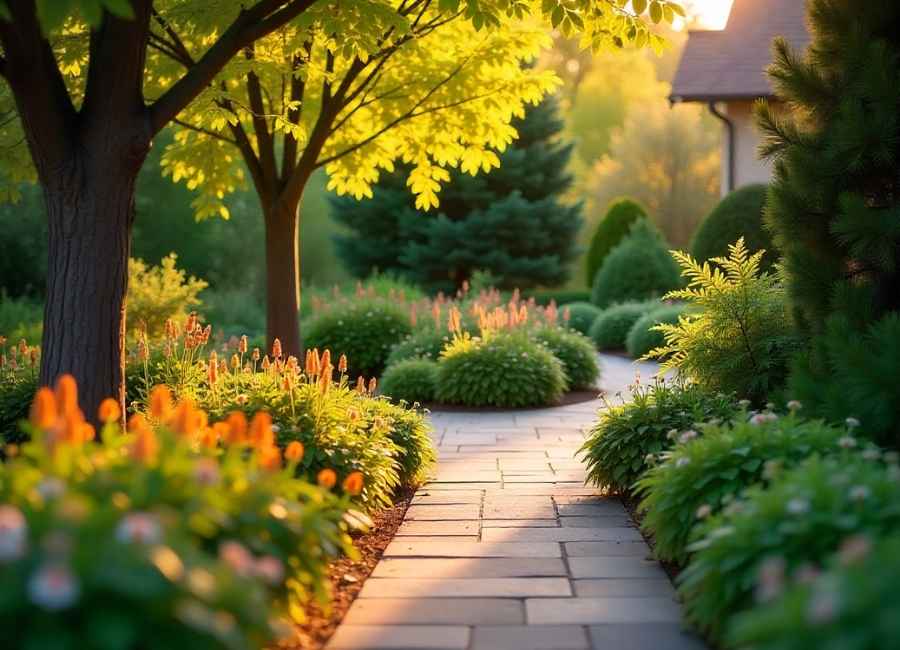
Now that you’ve selected plants, it’s time to design a cohesive layout. Here are some tips for maximizing both functionality and beauty.
Build Layers
Create depth by placing taller trees and shrubs near the back or top of the hill and cascading smaller plants, like groundcovers and grasses, toward the front.
Incorporate Hardscaping
Add paths, boulders, or decorative gravel to break up plantings and add visual interest. Hardscaping elements also reduce maintenance and water requirements.
Choose a Color Palette
Tie the landscape together by sticking to a specific palette, such as warm desert tones or cool greens and blues.
Add Mulch
Mulch isn’t just decorative; it also helps retain moisture and reduces the need for frequent watering.
Maintenance Tips for Drought-Tolerant Landscapes
While drought-tolerant plants require less care, a little maintenance will go a long way in keeping your landscape lush and thriving.
- Weed Control: Remove weeds regularly, as they compete with plants for water and nutrients.
- Deep Watering: Water deeply but infrequently to encourage roots to grow deeper into the soil, making plants more resilient.
- Pruning: Trim overgrown plants to ensure proper airflow and maintain shape.
- Seasonal Adjustments: Add or replace mulch seasonally and adjust irrigation settings based on weather conditions.
Get Started on Your Drought-Tolerant Masterpiece Today
Landscaping a corner house on a side hill doesn’t have to be an uphill battle. By combining strategic design with drought-tolerant plants, you can create a sustainable, low-maintenance landscape that enhances your home’s curb appeal and supports the environment.
Whether you’re envisioning a lush hillside with lavender and succulents or a modern design featuring agave and boulders, the key is to plan thoughtfully and plant purposefully.
What’s your next step? Start today by assessing your yard and drafting a design layout. If you’re unsure about plant choices or installation, consult with a professional landscaper to bring your vision to life.







